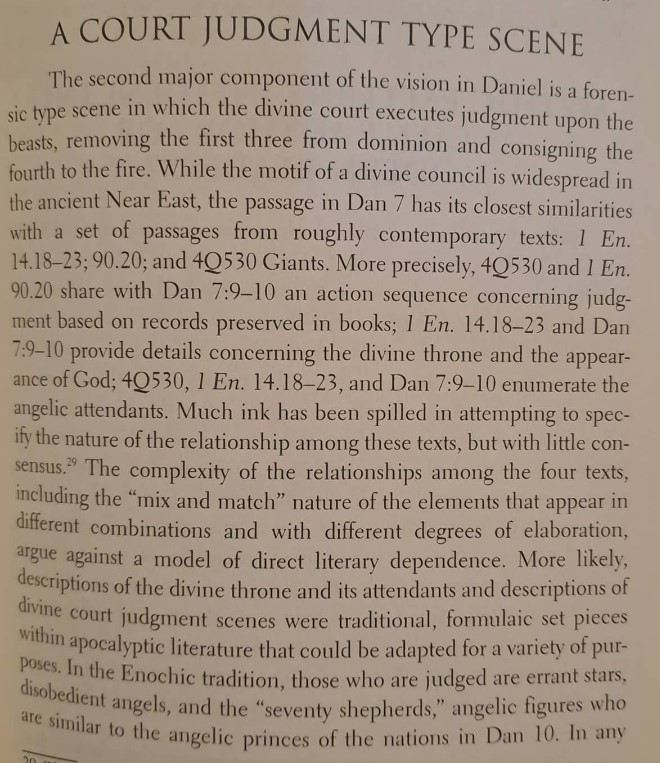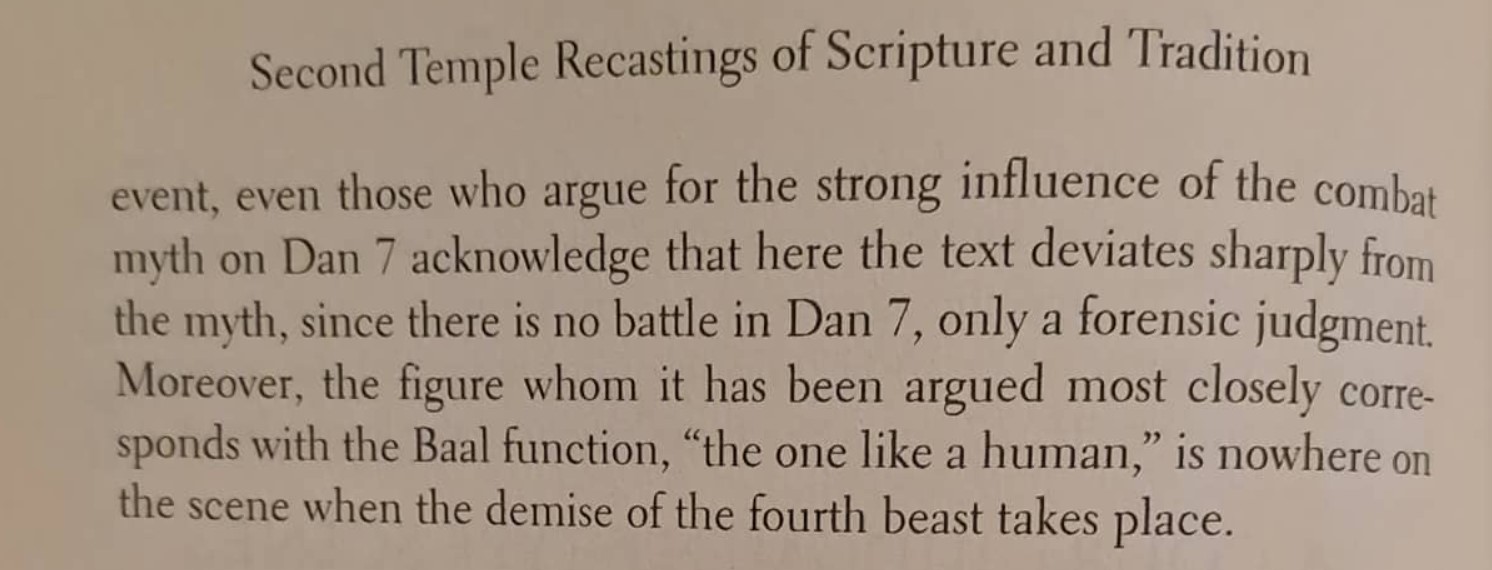Carol A. Newsom discusses and critiques the thesis that Ugaritic Mythology informs Daniel 7.
- Type
- Book
- Source
- Carol A. Newsom Non-LDS
- Hearsay
- DirectSecondary
- Reference
Carol A. Newsom, “The Reuse of Ugaritic Mythology in Daniel 7 An Optical Illusion?,” in Biblical Essays in Honor of Daniel J. Harrington, SJ, and Richard J. Clifford, SJ: Opportunity For No Little Instruction, ed. Christopher G. Frechette, Christopher R. Matthews, and Thomas D. Stegman (New York: Paulist Press, 2014), 95-96
- Scribe/Publisher
- Paulist Press
- People
- Carol A. Newsom
- Audience
- Reading Public
- Transcription
A COURT JUDGMENT TYPE SCENE
The second major component of the vision in Daniel is a forensic type in which the divine court executes judgment upon the beasts, removing the first three from dominion and consigning the fourth to the fire. While the motif of a divine council is widespread in the ancient Near East, the passage in Dan 7 has its closest similarities with a set of passages from roughly contemporary texts: 1 En. 14.18-23; 90.20; and 4Q530 Giants. More precisely, 4Q530 and 1 En. 90.20 share with Dan 7:9-10 an action sequence concerning judgment based on records preserved in books; 1 En. 14.18-23 and Dan 7:9-10 provide details concerning the divine throne and the appearance of God: 4Q530, 1 En. 14.18-23, and Dan 7:9-10 enumerate the angelic attendants. Much ink has been spilled in attempting to specify the nature of the relationship among these texts, but with little consensus. The complexity of the relationships among the four texts, including the “mix and match” nature of the elements that appear in different combinations and with different degrees of elaboration, argue against a model of direct literary dependence. More likely, descriptions of the divine throne and its attendants and descriptions of divine court judgment scenes were traditional, formulaic set pieces within apocalyptic literature that could be adapted for a variety of purposes. In the Enochic tradition, those who are judged are errant stars, disobedient angels, and the “seventy shepherds,” angelic figures who are similar to the angelic princes of the nations on Dan 10. In any event, even those who argue for the strong influence of the combat myth on Dan 7 acknowledge that here the text deviates sharply from the myth, since there is no battle in Dan 7, only a forensic judgment. Moreover, the figure whom it has been argued most closely corresponds with the Baal function, “the one like a human,” is nowhere on the scene when the demise of the fourth beast takes place.
- Citations in Mormonr Qnas
The B. H. Roberts Foundation is not owned by, operated by, or affiliated with the Church of Jesus Christ of Latter-day Saints.


